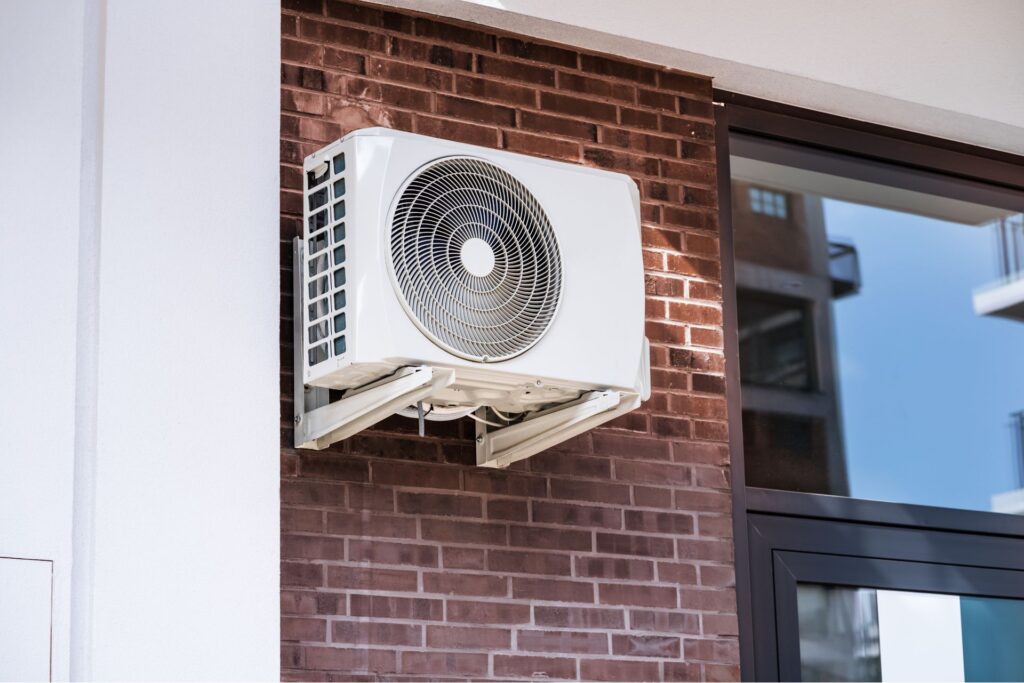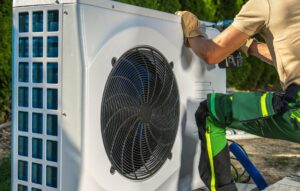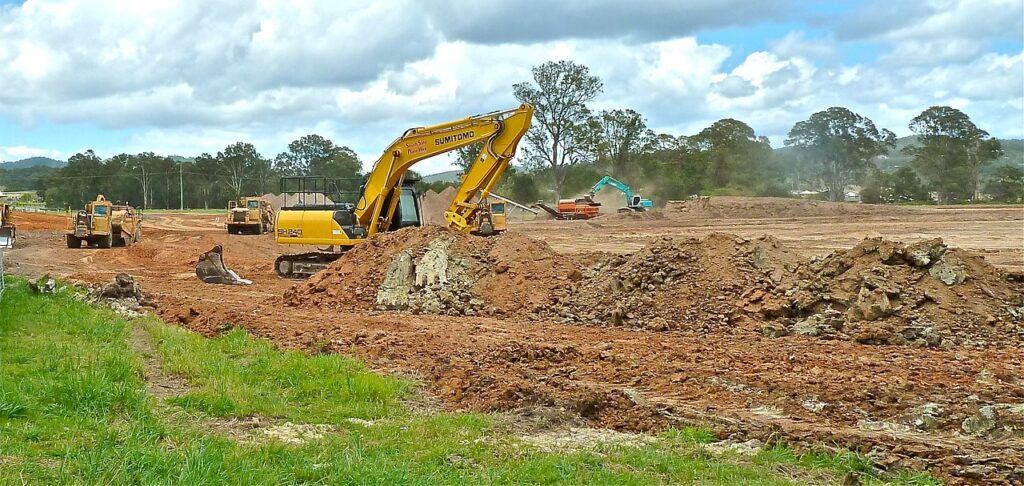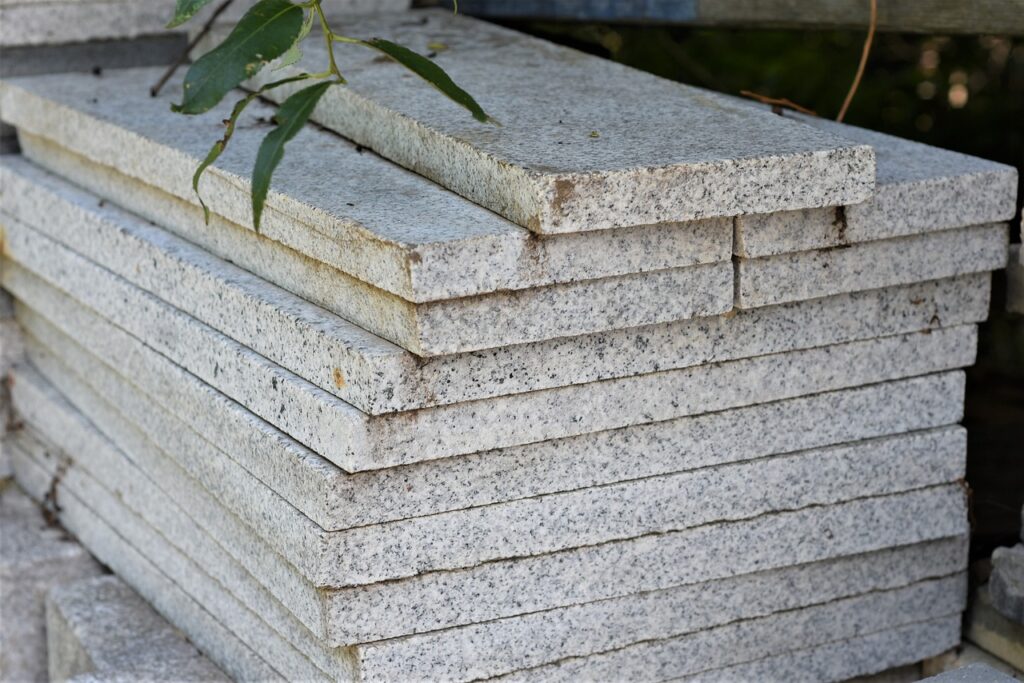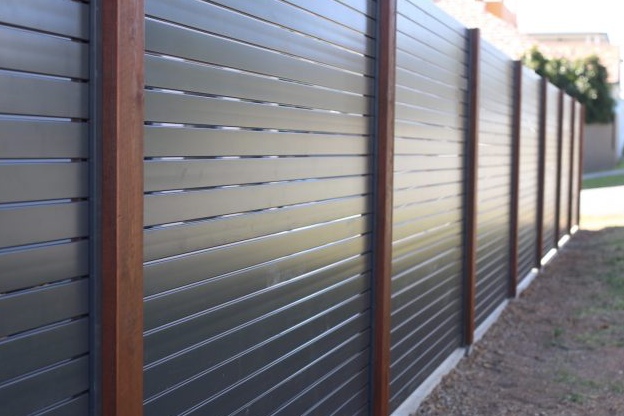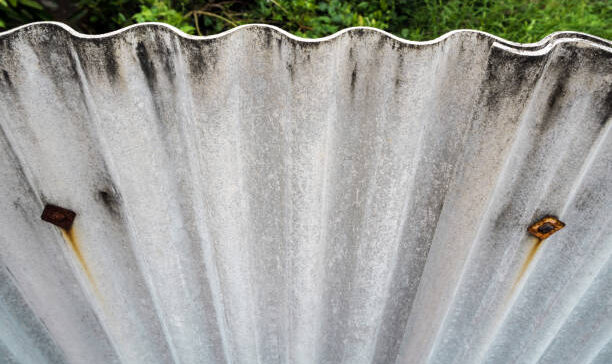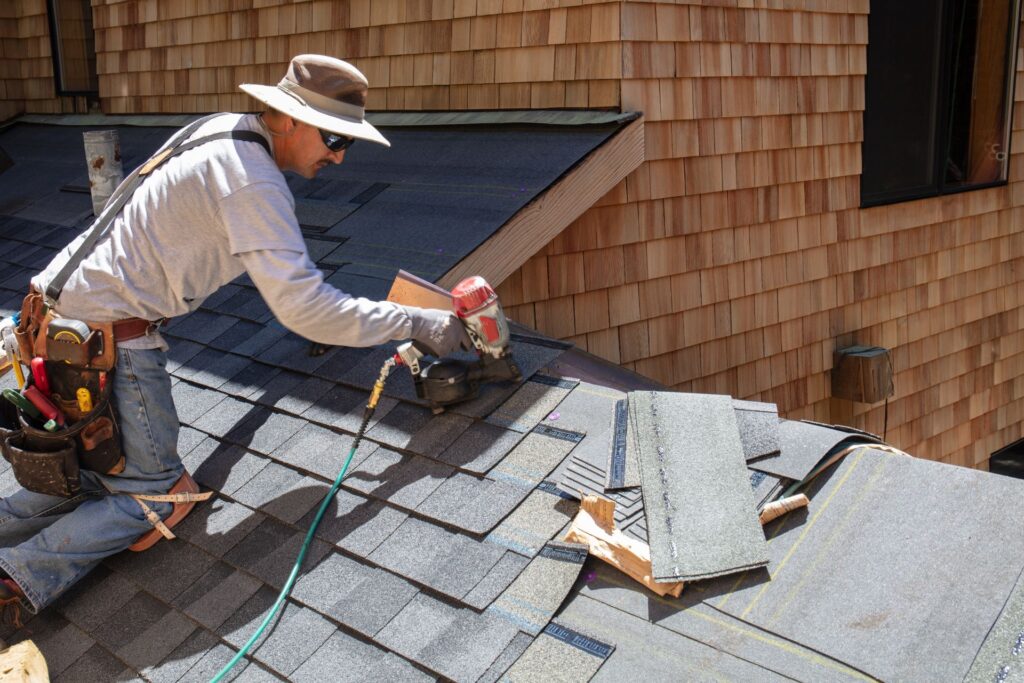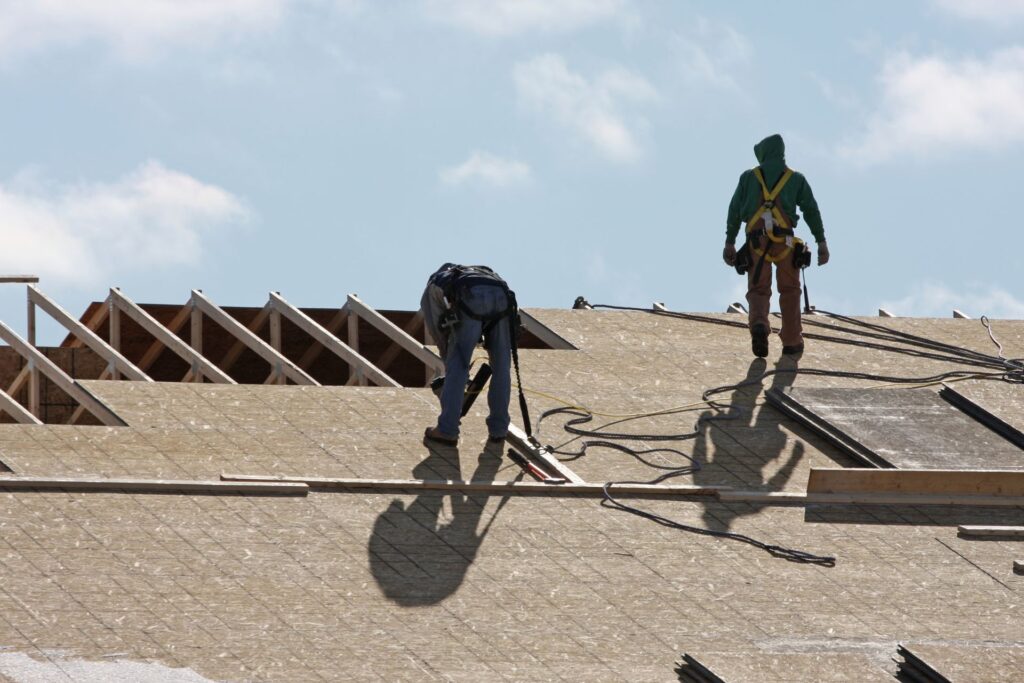Welcome to our comprehensive guide on the cost of heat pump installation in Wellington! With the growing popularity of heat pumps due to their energy efficiency, environmental benefits, and ability to provide year-round comfort, many Wellington homeowners are considering this upgrade. In this article, we will delve into the various factors that influence the cost of installing a heat pump, compare it with other heating and cooling systems, and provide tips to ensure you make a well-informed decision. Whether you’re looking to save on energy bills or enhance your home’s comfort, understanding the costs involved is a crucial step in your journey toward a more efficient and eco-friendly heating solution.
The cost of heat pump installation in Wellington typically ranges from $3,500 to $7,500, depending on factors such as the type of heat pump, the size and capacity needed, the brand and model, and the complexity of the installation. Additional costs may include permits, inspections, and any necessary electrical upgrades. For the most accurate estimate, it’s recommended to consult with local HVAC professionals who can assess your specific needs and provide a detailed quote.
- Understanding Heat Pumps
- Benefits Of Installing A Heat Pump
- Factors Influencing The Cost Of Heat Pump Installation
- Average Cost Of Heat Pump Installation In Wellington
- Cost Comparison With Other Heating And Cooling Systems
- Choosing The Right Heat Pump For Your Home
- Steps To Install A Heat Pump
- Tips To Reduce Installation Costs
- Maintenance And Running Costs
- Testimonials And Case Studies
- FAQs: About Cost Of Heat Pump Installation Wellington
- Conclusion
- Find A Professional Electrical Company Near You!
Understanding Heat Pumps
What is a Heat Pump?
Heat pumps are a remarkable technology designed to provide both heating and cooling solutions for homes and buildings. At their core, heat pumps transfer heat from one place to another, making them highly efficient and environmentally friendly.
Definition and Basic Functioning
A heat pump is a mechanical compression cycle refrigeration system that can be reversed to either heat or cool a controlled space. It operates by extracting heat from one area and transferring it to another. During the winter months, a heat pump extracts heat from the outside air (even when it’s cold) and transfers it indoors to warm your home. Conversely, in the summer, it removes heat from inside your home and releases it outside, thus cooling the interior space.
The basic functioning of a heat pump involves four main components:
1. Evaporator: Absorbs heat from the outside air or ground.
2. Compressor: Increases the temperature and pressure of the refrigerant.
3. Condenser: Releases absorbed heat into the indoor space.
4. Expansion Valve: Reduces the pressure of the refrigerant, cooling it down before it returns to the evaporator.
Types of Heat Pumps
There are several types of heat pumps, each suited to different climates and needs. The two most common types are air-source heat pumps and ground-source (or geothermal) heat pumps.
1. Air-Source Heat Pumps (ASHPs)
Overview: These are the most widely used heat pumps. They transfer heat between your house and the outside air.
Functionality: In heating mode, ASHPs extract heat from the outside air and pump it indoors. In cooling mode, the process is reversed.
Advantages: ASHPs are relatively easy to install and can be highly efficient, especially in moderate climates.
Disadvantages: Their efficiency can drop in extremely cold temperatures, making them less effective in very cold climates without supplementary heating systems.
2. Ground-Source Heat Pumps (GSHPs)
Overview: Also known as geothermal heat pumps, these systems use the stable temperature of the ground or a nearby water source to provide heating and cooling.
Functionality: GSHPs transfer heat between your house and the ground. They can be more efficient than air-source heat pumps because the ground temperature remains relatively constant throughout the year.
Advantages: GSHPs are highly efficient and have lower operating costs over time. They are also more environmentally friendly due to their high efficiency.
Disadvantages: The installation of GSHPs can be more expensive and complex, as it requires drilling or excavation.
Understanding how heat pumps work and the different types available can help homeowners make informed decisions about their heating and cooling needs. Heat pumps offer a versatile and efficient solution for maintaining comfortable indoor temperatures year-round, contributing to energy savings and reduced environmental impact. Whether opting for an air-source or ground-source system, choosing the right heat pump can provide long-term benefits in terms of comfort and cost-effectiveness.

Benefits Of Installing A Heat Pump
Installing a heat pump in your home can bring numerous benefits, ranging from cost savings to environmental advantages and enhanced comfort. Here’s a detailed look at why a heat pump might be the right choice for your household.
Energy Efficiency
One of the most significant benefits of heat pumps is their energy efficiency. Unlike traditional heating systems that generate heat through combustion or electrical resistance, heat pumps transfer heat from one place to another. This method of heat transfer requires significantly less energy, making heat pumps a highly efficient option for both heating and cooling your home.
How Heat Pumps Save on Energy Bills
Heat pumps are renowned for their ability to save on energy bills. Because they move heat rather than generate it, heat pumps can deliver up to three times more heating energy to a home than the electrical energy they consume. This efficiency translates directly into cost savings. Homeowners can expect to see a substantial reduction in their monthly utility bills after installing a heat pump. Additionally, many modern heat pumps come with advanced features like programmable thermostats and variable-speed compressors, which further enhance their efficiency and help to keep energy costs low.
Environmental Impact
Heat pumps are not only good for your wallet but also for the environment. By choosing a heat pump, you are making a conscious decision to reduce your carbon footprint.
Reduction in Carbon Footprint
Traditional heating systems, particularly those that rely on fossil fuels, contribute significantly to greenhouse gas emissions. Heat pumps, on the other hand, use electricity, which can be sourced from renewable energy. This shift away from fossil fuels means that heat pumps produce far fewer carbon emissions. In regions where the electricity grid is powered by renewable energy, the environmental benefits of heat pumps are even more pronounced. By reducing reliance on fossil fuels and lowering greenhouse gas emissions, heat pumps play a crucial role in combating climate change and promoting sustainable living.
Comfort and Convenience
Beyond the financial and environmental benefits, heat pumps offer unparalleled comfort and convenience for homeowners.
Year-round Temperature Control
One of the standout features of heat pumps is their ability to provide both heating and cooling. This dual functionality ensures that your home remains comfortable throughout the year, regardless of the season. In the winter, a heat pump extracts heat from the outside air (even when it’s cold) and brings it inside to warm your home. In the summer, the process is reversed: the heat pump removes heat from your home and releases it outside, effectively cooling your living space.
Additionally, heat pumps distribute air evenly throughout the home, eliminating hot and cold spots and maintaining a consistent indoor temperature. Many heat pumps also come equipped with air filters that improve indoor air quality by removing dust, pollen, and other allergens. This feature is particularly beneficial for individuals with respiratory issues or allergies.
In summary, installing a heat pump is a smart investment for any homeowner. The energy efficiency of heat pumps leads to substantial savings on energy bills, while their environmentally friendly operation helps reduce carbon emissions. Furthermore, the year-round temperature control and enhanced indoor air quality provided by heat pumps contribute to a more comfortable and healthier living environment. By opting for a heat pump, you are not only enhancing your home’s comfort and efficiency but also making a positive impact on the planet.

Factors Influencing The Cost Of Heat Pump Installation
When considering the installation of a heat pump, it’s important to understand the various factors that can influence the overall cost. Each element plays a significant role in determining the final price, and being aware of these can help you make an informed decision.
Type of Heat Pump
The type of heat pump you choose is one of the primary determinants of the installation cost. There are several types of heat pumps, including air-source, ground-source (geothermal), and ductless mini-split systems.
Air-Source Heat Pumps: These are typically more affordable and easier to install. They extract heat from the air outside and transfer it into your home.
Ground-Source Heat Pumps: Also known as geothermal heat pumps, these are more expensive due to the need for extensive ground excavation. They are highly efficient and can significantly reduce energy bills over time.
Ductless Mini-Split Systems: These systems are ideal for homes without existing ductwork. While they offer flexibility in installation, the costs can vary based on the number of indoor units required.
Size and Capacity
The size and capacity of the heat pump are crucial factors that affect the installation cost. Heat pumps are rated by their capacity to heat or cool a space, usually measured in British Thermal Units (BTUs) or tons.
Sizing: An appropriately sized heat pump ensures optimal performance and energy efficiency. If the unit is too small, it will struggle to maintain the desired temperature, leading to higher energy consumption and wear and tear. Conversely, an oversized unit can lead to short cycling and higher upfront costs.
Capacity: Larger-capacity heat pumps are more expensive. However, the right capacity ensures that your home remains comfortable throughout the year without unnecessary strain on the system.
Brand and Model
The brand and model of the heat pump you choose can significantly influence the cost. Well-known brands often come with a higher price tag due to their reputation for quality, reliability, and advanced features.
Brand Reputation: Brands like Mitsubishi, Daikin, and Trane are known for their high-quality products, which often come with comprehensive warranties and robust customer support.
Model Features: Newer models with advanced features such as smart thermostats, variable speed compressors, and enhanced energy efficiency ratings tend to be more expensive. These features can provide better comfort and long-term savings on energy bills.
Installation Complexity
The complexity of the installation process is another critical factor affecting the cost. This includes the size of your home, the existing insulation, and the current state of your HVAC system.
Home Size: Larger homes may require more extensive ductwork or multiple heat pump units, increasing the installation cost.
Insulation: Homes with poor insulation may need additional work to ensure the heat pump operates efficiently, leading to higher installation costs.
Existing HVAC Systems: If your home already has an HVAC system in place, the installation might be simpler and less expensive. However, if significant modifications or upgrades are needed, the costs will rise.
Additional Components
The cost of heat pump installation can also be influenced by the need for additional components. These components ensure the system functions correctly and efficiently.
Thermostats: Modern, programmable, or smart thermostats can add to the upfront cost but offer better control over your home’s climate and energy usage.
Ductwork: If your home requires new ductwork or modifications to existing ducts, this can significantly increase the installation cost.
Electrical Upgrades: Some installations may necessitate electrical upgrades to accommodate the new system, adding to the overall expense.
Understanding these factors can help you budget effectively and choose the right heat pump for your home. Consulting with a professional installer can provide a more accurate estimate based on your specific situation, ensuring you make a well-informed decision.
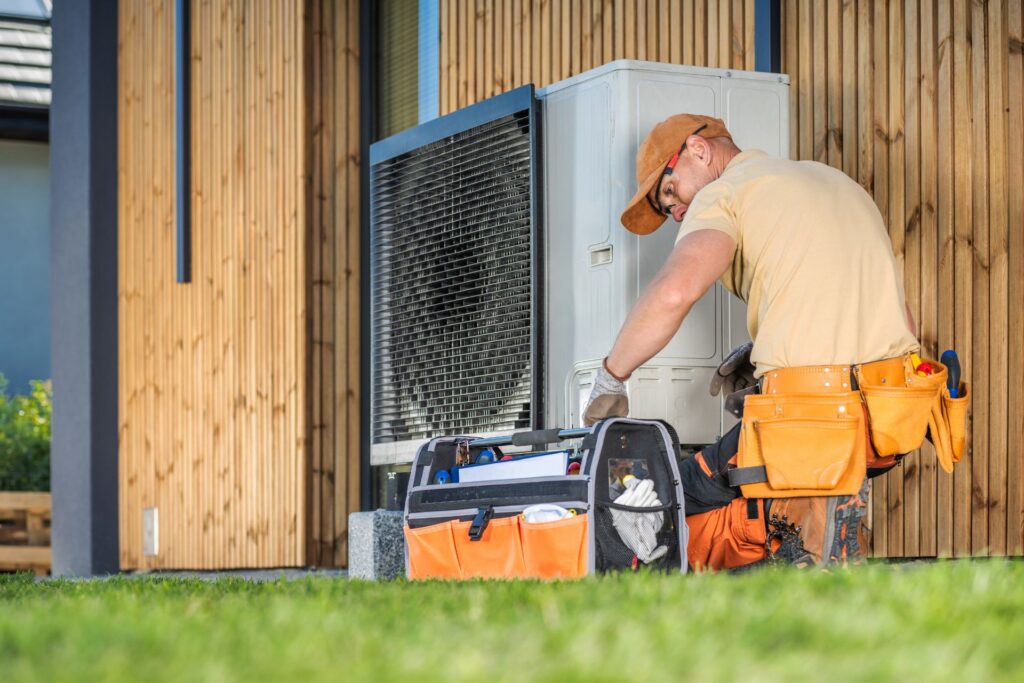
Average Cost Of Heat Pump Installation In Wellington
Price Range
When considering the installation of a heat pump in Wellington, it’s essential to understand the typical cost range. On average, the cost of heat pump installation in Wellington can vary between $2,500 and $5,500. This range depends on several factors including the type of heat pump, the size of your home, and specific installation requirements.
Breakdown of Costs
Installation Labor Costs
Labor costs form a significant part of the overall expense. On average, installation labor costs can range from $1,000 to $2,000. This variation is influenced by the complexity of the installation process, the experience of the technicians, and any additional work required to accommodate the new system.
Cost of the Heat Pump Unit
The price of the heat pump unit itself is another major component. Basic models start at around $1,500, while more advanced and energy-efficient models can cost up to $3,500 or more. The choice of unit will depend on your budget, energy efficiency preferences, and the heating and cooling needs of your home.
Additional Costs
In addition to labor and equipment, there are often other costs to consider:
Permits and Inspections: Depending on local regulations, you may need to obtain permits for your heat pump installation. These can range from $100 to $300. Post-installation inspections, if required, can add another $100 to $200.
Electrical Work: If your existing electrical system needs upgrades to support the new heat pump, this can add $500 to $1,000 to your total cost.
Ductwork Modifications: For homes with existing ductwork that needs modification or for installations requiring new ducts, costs can range from $500 to $2,000.
Understanding these components helps in preparing a realistic budget and ensures there are no unexpected surprises during the installation process. Proper planning and consulting with professional installers can help you make informed decisions, ultimately leading to efficient and effective heating and cooling for your home.

Cost Comparison With Other Heating And Cooling Systems
Heat Pumps vs. Traditional Heating Systems
When considering a heating and cooling solution for your home, it’s essential to evaluate the cost and benefits of different systems. Heat pumps have become increasingly popular in recent years, thanks to their energy efficiency and versatility. Let’s delve into a cost-benefit analysis to understand how heat pumps stack up against traditional heating systems.
Initial Investment
One of the primary considerations is the initial investment. Heat pumps generally have a higher upfront cost compared to traditional heating systems such as furnaces or boilers. The installation of a heat pump can range from $4,000 to $10,000, depending on the type and capacity. In contrast, a traditional furnace installation might cost between $2,500 and $6,000. Although the initial expenditure for a heat pump is higher, it’s important to consider the long-term benefits.
Energy Efficiency
Heat pumps are renowned for their energy efficiency. They operate by transferring heat rather than generating it, making them significantly more efficient than traditional heating systems. For every unit of electricity consumed, a heat pump can produce three to four units of heat, translating to an efficiency rate of 300-400%. On the other hand, even the most efficient gas furnaces typically max out at around 98% efficiency. This remarkable efficiency of heat pumps can lead to substantial savings on your energy bills.
Operational Costs
Due to their higher efficiency, heat pumps have lower operational costs. Homeowners can expect to save 30-50% on their heating and cooling bills compared to traditional systems. For instance, if you currently spend $1,500 annually on heating and cooling, switching to a heat pump could potentially reduce your expenses to around $750-$1,050 per year.
Maintenance and Lifespan
Maintenance costs are another factor to consider. Heat pumps generally require less maintenance than traditional heating systems. With proper care, a heat pump can last 15-20 years, whereas furnaces typically have a lifespan of 10-15 years. The reduced maintenance and longer lifespan further enhance the cost-effectiveness of heat pumps over time.
Long-term Savings
The long-term savings associated with heat pumps can be substantial. Here’s a closer look at the estimated savings over time when opting for a heat pump compared to traditional heating systems.
Annual Savings
As previously mentioned, heat pumps can save homeowners 30-50% on energy bills. Assuming an average annual energy cost of $1,500 for traditional systems, the savings can range from $450 to $750 each year. Over a decade, this translates to $4,500 to $7,500 in savings.
Incentives and Rebates
Many governments and utility companies offer incentives and rebates for installing energy-efficient systems like heat pumps. These incentives can significantly reduce the initial investment cost, further enhancing
long-term savings. For instance, rebates can range from $500 to $2,000, depending on the region and specific programs available.
Environmental Benefits
In addition to financial savings, heat pumps offer significant environmental benefits. By reducing energy consumption, they help lower greenhouse gas emissions, contributing to a greener and more sustainable future. This aspect, while not directly tied to monetary savings, adds value by aligning with eco-friendly initiatives and potentially increasing the resale value of your home.
Increased Property Value
Installing a heat pump can also increase your property’s value. Prospective buyers are often willing to pay a premium for homes with modern, energy-efficient heating and cooling systems. This can provide an additional financial benefit when you decide to sell your home.
In conclusion, while the initial investment in a heat pump may be higher compared to traditional heating systems, the long-term savings, increased energy efficiency, lower operational costs, and environmental benefits make it a smart choice for homeowners. By evaluating these factors, you can make an informed decision that not only saves you money but also contributes to a more sustainable future.

Choosing The Right Heat Pump For Your Home
When it comes to choosing the right heat pump for your home, several factors come into play. It’s not just about picking a brand or model; it’s about understanding your specific needs and the unique conditions of your home environment. Here’s a detailed guide to help you navigate this important decision.
Assessing Your Needs
The first step in choosing a heat pump is assessing your needs. This involves considering several key factors:
1. Home Size and Layout: The size and layout of your home significantly impact the type of heat pump you should choose. Larger homes or homes with multiple floors may require a more powerful system or even multiple units to ensure even heating and cooling throughout the space.
2. Energy Efficiency: Look for heat pumps with high energy efficiency ratings. An efficient system will save you money on your energy bills in the long run and is better for the environment. Check the Seasonal Energy Efficiency Ratio (SEER) and Heating Seasonal Performance Factor (HSPF) ratings when comparing models.
3. Budget: Heat pumps come in a wide range of prices. While it’s tempting to go for the cheapest option, it’s important to consider the long-term costs, including energy consumption and maintenance. Investing in a higher quality, more efficient model can be more cost-effective over time.
4. Additional Features: Modern heat pumps come with various features such as remote control, programmable thermostats, and smart home compatibility. Consider which features are important to you and can enhance your comfort and convenience.
Consulting with Professionals
Choosing a heat pump is not a decision you should make on your own. Consulting with professionals is crucial for several reasons:
1. Expert Assessment: Professionals can assess your home and recommend the best type of heat pump based on its specific characteristics. They will consider factors like insulation, window types, and the typical occupancy of the home.
2. Accurate Quotes: Getting quotes from multiple professionals ensures you get the best deal. It also helps you understand the installation costs and any potential additional expenses.
3. Proper Installation: Proper installation is key to the efficient operation of your heat pump. Professionals have the expertise to install the system correctly, ensuring it runs efficiently and lasts longer.
Wellington Climate Considerations
Wellington’s unique climate plays a significant role in the performance and choice of your heat pump. Here are some considerations specific to Wellington:
1. Mild Winters and Cool Summers: Wellington experiences mild winters and cool summers, which means your heat pump won’t have to work as hard as it might in more extreme climates. This can influence the type of system you choose and its energy efficiency.
2. High Wind Conditions: Wellington is known for its windy conditions. It’s essential to choose a heat pump that can withstand these conditions, particularly if it’s an outdoor unit. Look for robust, well-built models designed to handle high winds.
3. Humidity Levels: While Wellington doesn’t typically experience high humidity, it’s still a factor to consider. Some heat pumps are better at managing humidity levels, ensuring your home stays comfortable year-round.
By taking into account your home’s specific needs, consulting with professionals, and considering the local climate conditions, you can choose the right heat pump that will provide efficient, reliable heating and cooling for years to come. This thoughtful approach ensures that you make an informed decision that balances cost, efficiency, and comfort.

Steps To Install A Heat Pump
Pre-Installation Preparation
Site Assessment and Planning
Before starting the installation of a heat pump, thorough preparation is crucial. The first step involves a comprehensive site assessment. This includes evaluating the space where the heat pump will be installed to ensure it meets all necessary requirements for efficient operation. The assessment involves checking the available space, the structural integrity of the area, and any potential obstacles that might hinder the installation process.
Next, planning the installation involves selecting the appropriate type and size of the heat pump that suits the specific needs of the household or commercial space. This decision is based on factors such as the size of the area to be heated or cooled, the local climate, and energy efficiency considerations. Proper planning ensures that the heat pump will operate at its best, providing optimal comfort and energy savings.
Installation Process
Step-by-Step Overview of the Installation Process
1. Mounting the Indoor Unit: The installation process begins with mounting the indoor unit. This unit is typically installed on a wall or ceiling inside the space that needs heating or cooling. The exact location is chosen to ensure even distribution of air throughout the room.
2. Installing the Outdoor Unit: The next step involves placing the outdoor unit in a suitable location outside the building. The outdoor unit should be positioned on a solid base, away from direct sunlight and obstructions to allow for proper airflow.
3. Connecting the Indoor and Outdoor Units: After the units are securely mounted, the indoor and outdoor units are connected using refrigerant lines, electrical wiring, and a drainage pipe. These connections are crucial for the efficient transfer of heat between indoor and outdoor environments.
4. Electrical Connections: The heat pump needs to be connected to the power supply. This step must be performed by a licensed electrician to ensure safety and compliance with local electrical codes.
5. Vacuuming the System: Once all the connections are made, the system needs to be vacuumed to remove any air and moisture from the refrigerant lines. This step is essential to maintain the efficiency and longevity of the heat pump.
6. Charging the System with Refrigerant: The final step in the installation process is to charge the system with the appropriate amount of refrigerant. This ensures the heat pump can effectively transfer heat.
Post-Installation Checks
Ensuring the System Works Correctly and Efficiently
After the installation is complete, a series of post-installation checks are conducted to ensure the system operates correctly and efficiently. These checks include:
1. Testing the System: The heat pump is turned on, and its operation is tested in both heating and cooling modes to ensure it functions as expected. This involves checking the airflow, temperature control, and responsiveness of the system.
2. Inspecting for Leaks: The refrigerant lines and connections are inspected for any potential leaks. Even a small leak can significantly impact the efficiency and performance of the heat pump.
3. Verifying Electrical Connections: All electrical connections are rechecked to ensure they are secure and comply with safety standards. This includes verifying the grounding and ensuring there are no loose wires.
4. Reviewing User Settings: The system settings are reviewed and adjusted according to the user’s preferences. This includes setting the desired temperature ranges and programming any automated features.
5. Providing User Instructions: Finally, the installer provides the user with instructions on how to operate and maintain the heat pump. This includes tips on energy-saving practices and information on regular maintenance to keep the system running efficiently.
By following these detailed steps, the installation of a heat pump can be carried out smoothly, ensuring optimal performance and long-term energy savings for the user.

Tips To Reduce Installation Costs
Government Incentives and Rebates
When considering heat pump installation in Wellington, one effective way to lower costs is by taking advantage of government incentives and rebates. The New Zealand government, as well as local councils, often provide financial assistance to encourage energy-efficient home improvements. These incentives can significantly reduce the upfront costs of purchasing and installing a heat pump.
Start by researching what specific rebates are available in your region. The Energy Efficiency and Conservation Authority (EECA) frequently offers grants and subsidies for heat pumps under their Warmer Kiwi Homes program. This initiative aims to make homes warmer, drier, and healthier by reducing the financial burden of energy-efficient installations. Additionally, Wellington residents might find specific local council incentives aimed at promoting sustainable living.
It’s also wise to consult with your heat pump provider. Many companies are well-versed in available rebates and can guide you through the application process. By leveraging these incentives, you can potentially save hundreds or even thousands of dollars on your installation costs.
Seasonal Discounts
Timing your purchase is another strategic way to cut down on installation expenses. Just like many other products, heat pumps are subject to seasonal pricing fluctuations. Generally, the demand for heat pumps peaks during extreme weather seasons – summer and winter. Consequently, prices can be higher during these periods due to increased demand.
To take advantage of lower prices, consider purchasing and installing your heat pump during the off-peak seasons – spring or autumn. Many retailers and installation companies offer discounts during these times to encourage sales during their slower periods. Additionally, manufacturers may provide promotional deals to boost sales in the shoulder seasons. By planning your purchase during these less busy times, you can often negotiate better rates and benefit from special offers.
DIY Preparation
Homeowners can also reduce professional installation costs by preparing their homes for the heat pump installation themselves. While it’s essential to leave the technical aspects of the installation to certified professionals, there are several preparatory tasks you can handle to make the process smoother and quicker, which in turn can lower labor costs.
First, ensure the installation site is clear and accessible. This means removing any obstacles or debris from the area where the outdoor unit will be placed. Inside your home, clear the space where the indoor unit will be installed. This not only speeds up the installation process but also ensures that the technicians can work efficiently without unnecessary interruptions.
Next, check if any minor electrical or structural work is needed, such as installing a dedicated circuit for the heat pump or reinforcing a wall to support the indoor unit. If you’re comfortable with basic DIY tasks, you can handle these preparations yourself, thus reducing the amount of work the installers need to do.
Finally, consider insulating your home better before the installation. While not directly related to the heat pump installation, improving insulation can enhance the efficiency of your heat pump, leading to long-term savings on energy bills. Simple steps like sealing drafts, adding weather stripping to doors and windows, and installing additional insulation in your attic can make a big difference.
By taking these proactive steps, homeowners can significantly reduce the overall cost of installing a heat pump while ensuring a smoother, more efficient installation process.

Maintenance And Running Costs
Routine Maintenance
Routine maintenance is a crucial aspect of ensuring the efficiency and longevity of any system or equipment. Whether it’s a home heating system, a vehicle, or industrial machinery, regular upkeep can prevent costly breakdowns and extend the life of the investment.
Importance of Regular Maintenance
Regular maintenance involves scheduled inspections, cleaning, and minor repairs that keep systems running smoothly. For instance, in a heating system, this might include checking the filters, inspecting the ducts, and ensuring the thermostat functions correctly. Neglecting these tasks can lead to decreased efficiency, higher energy bills, and potential system failures.
Moreover, regular maintenance can help identify and address minor issues before they escalate into major problems. For example, a small leak in a heating system can be fixed easily if caught early, but if left unchecked, it can cause significant water damage and require expensive repairs. Thus, regular maintenance not only ensures optimal performance but also saves money in the long run by preventing major repairs.
Impact on Efficiency and Lifespan
Routine maintenance has a direct impact on the efficiency and lifespan of any system. A well-maintained system operates more efficiently, consuming less energy and reducing overall operational costs. For instance, a heating system with clean filters and properly sealed ducts will distribute heat more effectively, resulting in lower energy consumption and reduced utility bills.
Furthermore, regular maintenance extends the lifespan of equipment. Just as regular oil changes and tune-ups keep a car running smoothly for years, regular maintenance of heating systems, for example, can significantly prolong their operational life. This means fewer replacements and a better return on investment over time.
Running Costs
Understanding and managing the running costs of any system is essential for budgeting and financial planning. Running costs encompass the expenses associated with the day-to-day operation of a system, including energy consumption, maintenance, and repairs.
Estimated Monthly Running Costs
Estimating the monthly running costs involves considering several factors, such as the system’s energy efficiency, the cost of energy in your area, and the system’s usage patterns. For example, the running costs for a heating system will vary depending on the size of the home, the system’s efficiency rating, and the local climate.
On average, a well-maintained heating system might cost anywhere from $50 to $150 per month to run. However, these costs can fluctuate based on usage, energy prices, and the system’s efficiency. It’s essential to regularly monitor your energy bills and usage to get an accurate estimate of your monthly running costs.
Tips to Keep Running Costs Low
Keeping running costs low requires a combination of regular maintenance and smart usage practices. Here are some tips to help you manage and reduce your running costs:
1. Regular Maintenance: As discussed, regular maintenance ensures your system operates efficiently, reducing energy consumption and running costs.
2. Energy-Efficient Upgrades: Investing in energy-efficient components, such as programmable thermostats or high-efficiency filters, can significantly lower energy usage.
3. Proper Insulation: Ensuring your home or building is well-insulated reduces the workload on your heating or cooling system, thereby cutting down on energy costs.
4. Smart Usage: Use systems only when necessary. For example, setting your thermostat a few degrees lower when you’re not at home can result in substantial savings over time.
5. Monitor Energy Usage: Regularly review your energy bills and consider conducting an energy audit to identify areas where you can improve efficiency and reduce costs.
By incorporating these practices, you can effectively manage and minimize the running costs of your systems, ensuring they remain affordable and efficient throughout their lifespan. Regular maintenance and smart usage are key to optimizing performance and keeping operational expenses in check.

Testimonials And Case Studies
Real-Life Examples
When considering the installation of a heat pump, nothing is more reassuring than hearing from those who have already made the investment. Real-life examples from Wellington homeowners who have installed heat pumps can provide invaluable insights. These testimonials often highlight the personal experiences of homeowners, shedding light on the actual benefits and any challenges faced during and after the installation process.
For instance, Jane and Tom, a couple from Karori, shared how their new heat pump transformed their home’s comfort level. “Before the installation, our home was always cold in the winter, and we had to rely on multiple space heaters, which drove up our electricity bill,” Jane explained. “Since installing the heat pump, our home stays warm and cozy with much lower energy costs.”
Another Wellington resident, Mark from Miramar, noted the improved air quality in his home. “I suffer from allergies, and since we got the heat pump, the air feels cleaner, and I’ve noticed a significant reduction in my symptoms,” he said. These personal stories not only highlight the practical benefits but also build trust among potential buyers who may be hesitant about making the switch to a heat pump.
Expert Opinions
To complement these personal anecdotes, expert opinions from HVAC professionals provide a technical perspective on the cost-effectiveness and efficiency of heat pumps. HVAC specialists can offer detailed insights into how heat pumps work, their energy efficiency, and long-term cost savings.
John, an experienced HVAC technician in Wellington, emphasized the importance of understanding the upfront investment versus the long-term savings. “While the initial cost of a heat pump can be higher compared to other heating systems, the energy savings over time make it a worthwhile investment,” he said. “Heat pumps are incredibly efficient, often converting one unit of electricity into three or more units of heat, which can significantly reduce your energy bills.”
Mary, another HVAC expert, pointed out the environmental benefits. “Heat pumps use renewable energy sources, which means they have a lower carbon footprint compared to traditional heating systems,” she explained. “This not only helps homeowners save money but also contributes to a more sustainable future.”
By combining real-life examples from homeowners with expert opinions, potential buyers get a well-rounded view of the benefits and considerations of installing a heat pump. This approach not only builds confidence but also provides a comprehensive understanding of the value a heat pump can bring to a home.
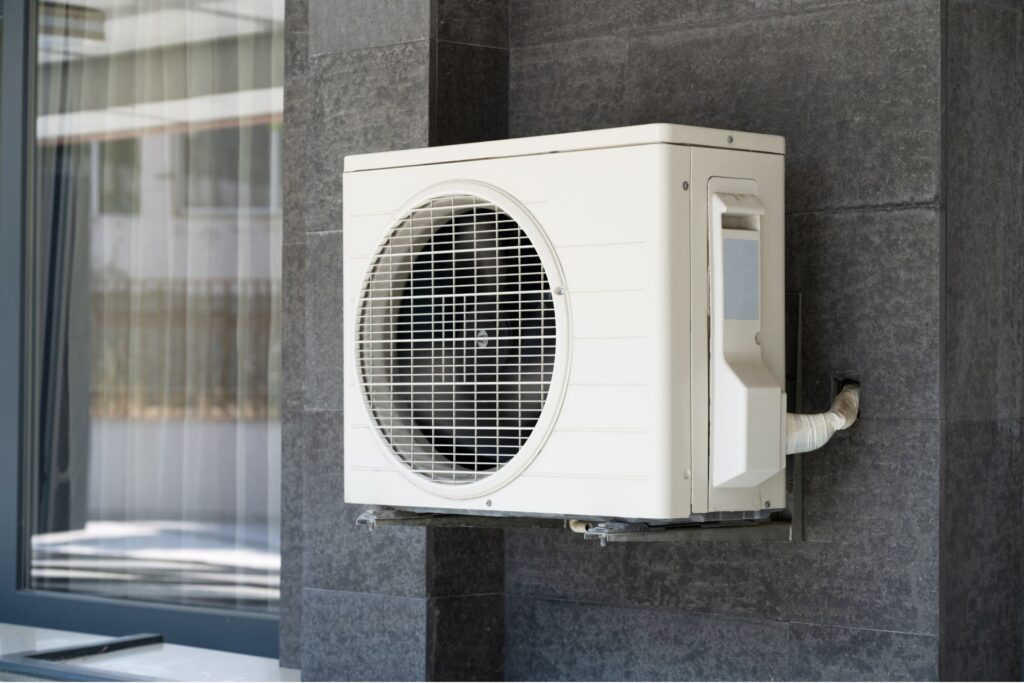
FAQs: About Cost Of Heat Pump Installation Wellington
Conclusion
In conclusion, when considering the cost of heat pump installation, it’s essential to remember key factors such as the size and type of heat pump, installation complexity, and potential additional costs like electrical upgrades or permits. By understanding these elements, homeowners can better prepare for the investment. A heat pump offers significant long-term benefits, including energy efficiency and cost savings on utility bills, making it a smart choice for many. If you’re thinking about installing a heat pump, now is the perfect time to reach out to local professionals for a personalized quote and expert consultation to ensure you make the best decision for your home.
Find A Professional Electrical Company Near You!
CCTV Security Camera Installation Auckland
Heat Pump Installation Auckland
CCTV Security Camera Systems Wellington
Heat Pump Installation Wellington
About the Author:
Mike Veail is a recognized digital marketing expert with over 6 years of experience in helping tradespeople and small businesses thrive online. A former quantity surveyor, Mike combines deep industry knowledge with hands-on expertise in SEO and Google Ads. His marketing strategies are tailored to the specific needs of the trades sector, helping businesses increase visibility and generate more leads through proven, ethical methods.
Mike has successfully partnered with numerous companies, establishing a track record of delivering measurable results. His work has been featured across various platforms that showcase his expertise in lead generation and online marketing for the trades sector.
Learn more about Mike's experience and services at https://theleadguy.online or follow him on social media:

